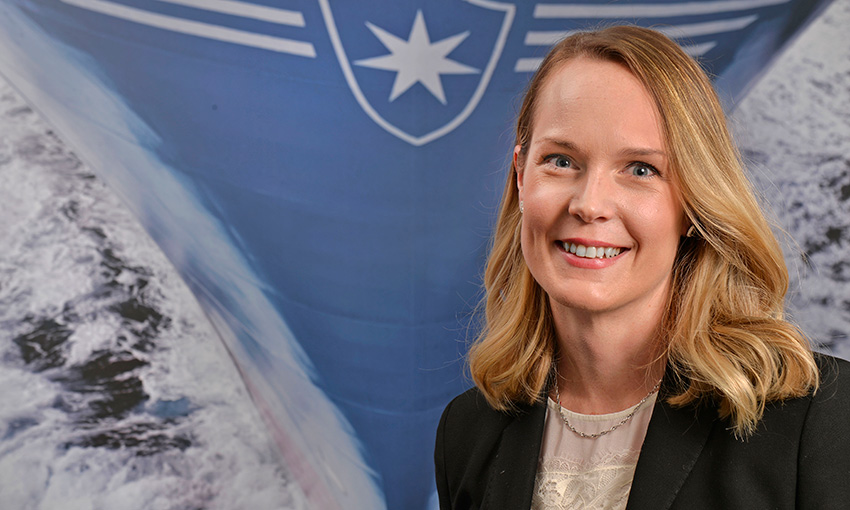The 5905 TEU Maersk Rio India sailed from Melbourne last night after the first of several inducement calls added to the NZ-South East Asia Southern Star service.
It’s a move Maersk says adds a premium option for shippers seeking more supply chain options during the Q3 Australian export peak, with “best-in-class lead times into key transhipment hubs in South East Asia and onward connections to global markets”.
Labelled ‘Melbourne Star’ the initiative inserts fortnightly calls by the Rio-class into the Southern Star rotation ex Port Chalmers en route to Tanjung Pelepas and is expected to continue until the end of September.
Industry sources described the Melbourne calls as “a smart move” given pressures on export space caused by SEA port congestion disrupting schedules, and likely to be targeting meat and dairy in particular. Ironically, the promised fast transits substantially undercut Maersk’s existing product in the market, Greater Australia Connect, operated in partnership with ANL/CMA CGM, Hapag-Lloyd and ONE, which calls Melbourne southbound but then Port Botany, Port Adelaide and Fremantle, leaving Melbourne northbound transits well adrift of competitors.
In three other service updates, Maersk has made an interim change to the rotation of its Western Australia Connect service in pursuit of ‘consistent reliability’.
From V432S of Maersk Yellowstone until V440S of MH Green WAC will swap Tanjung Pelepas and Singapore port calls, for a revised line-up of Singapore, Tanjung Pelepas, Fremantle. This means the Singapore window will change from Tuesday 0400, to Saturday 0700. Other port windows remain the same.
For the Dragon service from China/Hong Kong to East Coast Australia, Maersk is making operational adjustments ahead of typhoon season “to ensure reliability and stability in our services”.
According to the Typhoon Season Precautions Plan the Dragon rotation of Qingdao, Ningbo, Shanghai, HongKong, Yantian, Port Botany, Melbourne, Brisbane will be varied to alternate Shanghai and Ningbo omissions, beginning with GSL Melita’s omission of Ningbo on V431S.
“This strategic decision will help us manage potential delays and ensure smoother operations,” Maersk said, with the arrangement planned to last for nine consecutive weekly voyages.
Lastly, Maersk has decided to extend its latest variation to the Polaris trans-Tasman/NZ coastal feeder service, originally implemented in late April/early May and attributed to weather disruptions, until November 2024.
This means Polaris will continue to operate on a four-week proforma with three vessels – Oslo Trader, AS Sabine and JPO Aquarius – resulting in a blank sailing once every four weeks for four cycles. This extension aims to increase the schedule buffer, thereby minimizing weather-related disruptions and improving the predictability of shippers’ supply chain, Maersk says.
“During these schedule gaps, we will offer alternative solutions on our comprehensive network where feasible to keep your supply chain moving smoothly. Melbourne to New Zealand cargo will be routed on the OC1 and PANZ services offering two weekly departures from Melbourne to NZ during the weeks the Polaris has a schedule gap. Cargo to/from Nelson will have a one-week schedule gap and continue to load on the Polaris service.”
The extended modification is effective from V433E, departing Melbourne 18 August, and V435W, departing Auckland 28 August.




